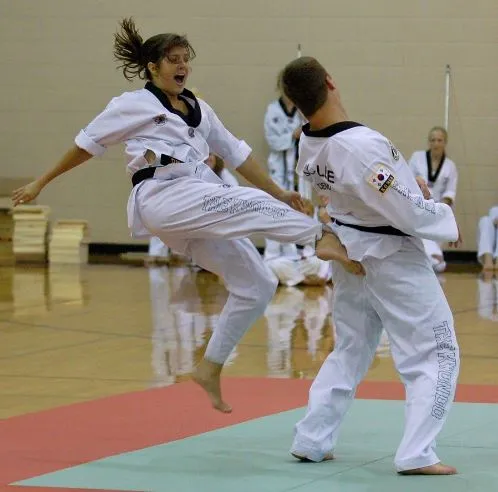
Benefits of Risk Management in Taekwondo (Part 2-The Taekwondo School Prospective)
By Robert K. Fujimura
In Part 1, we briefly explored the perspective of risk management through the eye of the student. If we flip the coin, how can the Taekwondo School use risk management as a tool? Look through several key areas:
Prepare for instruction. Lighting, floor space, instructional curriculum, staffing, and security, is important. The owner can view the program from the student (or parent) perspective. The owner can create an environment that encourages energy, instruction, and longevity of practice.
Communicate the risk. All schools (or should) have a comprehensive way to communicate and document the possibility of risk to the student. As a first line of defense is the registration and waiver form. Everything from capturing profile information, identifying possible previous heath history, validating the possibility of injury, costs and availability of the school are placed into a concise document to review and sign. This helps to the student to understand and communicate with the school. Your attorney may be helpful.
Match the individual with the activity. Not everyone desires to be an “Olympian”. Find the matching the skill and interest of the individual. This will minimize the frustration and even injuries. The level of fitness, age, body profile, personal goals, etc. allow for tailoring of the program. Self defense, fitness, competition, self improvement are focuses that helps makes a match. Find the best match.
Document your staff training. Making standard procedures encourages good practices. From initial contact (directing responses), setting up training schedule/practices, developing progressive resistance, expanding technical skill, background checks, and completing promotion requirement need constant maintenance. In the modern interpretation of Taekwondo, knowing and upholding these standards can create a strong culture that can be positive and minimize issues. Look to both the many resources now available and experts In the field It may be helpful to open the book with a consultant.
Transfer risk not only through practices but insurance is wise. Guided by a professional, review areas such as general liability – provides against the possibility of bodily injury and property damage during the school operations. Often, this can be endorsed with “hired/non-owned auto liability” (protecting and auto accidents regardless of the ownership of the vehicles). Commercial property – identifies the business property that can be damaged or lost (such as office furniture, training equipment, resale inventory, etc.) Workers’ Compensation protects employees against injuries during work. Specialized coverage such as cyber (protection against possible attacks and recover related to cyber incidents – financial or identity theft). A growing concern is also harassment / molestation. This may be protected by insurance contract.
Plan for action. From injuries, problems students, crisis issues, demand preparation. Train your staff in first aid. Make available prepared emergency contacts to staff (subject to privacy policies). Develop a method of communication with the parent or students. Facebook, bulk email, Instagram, etc. provides for communication platforms that can be developed.
Review and revise your system regularly. Good practices and procedures become dated over time. The purpose of review and revise is not to make things more complicated but stay current and precise. Like the philosophy of martial arts, your ability to objectively improve your system is essential in program success and risk management.
Taekwondo Today © 2022
